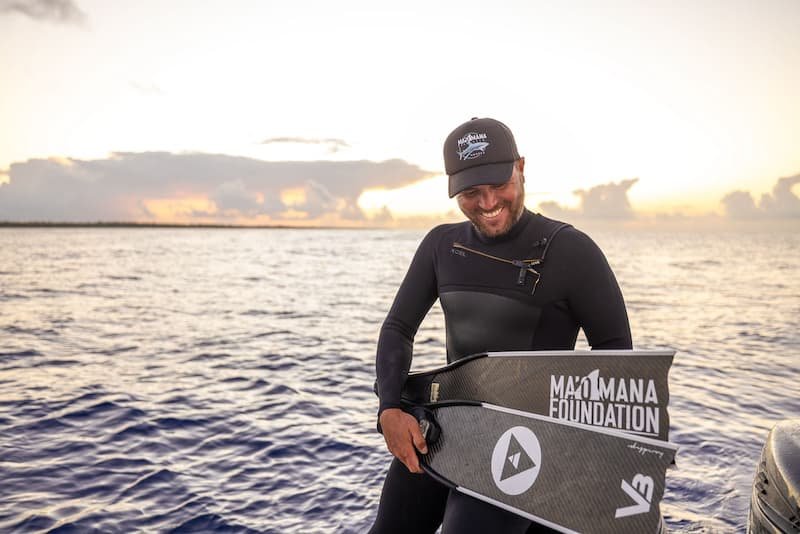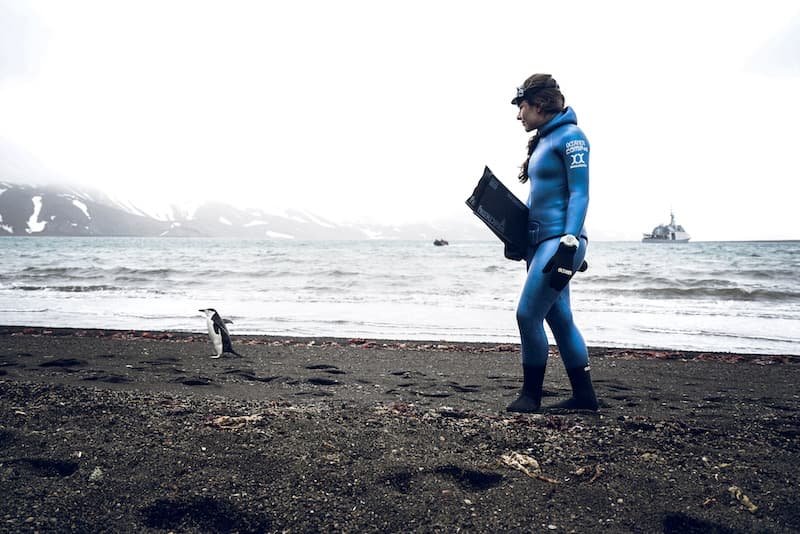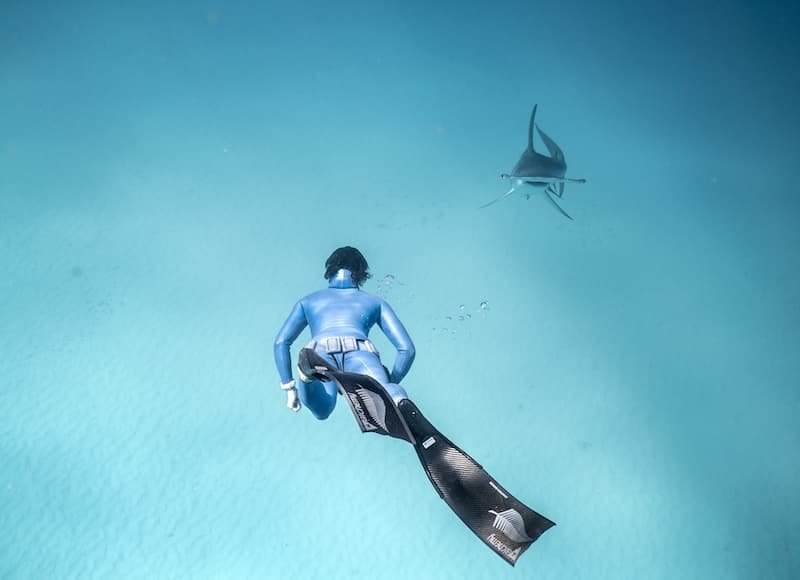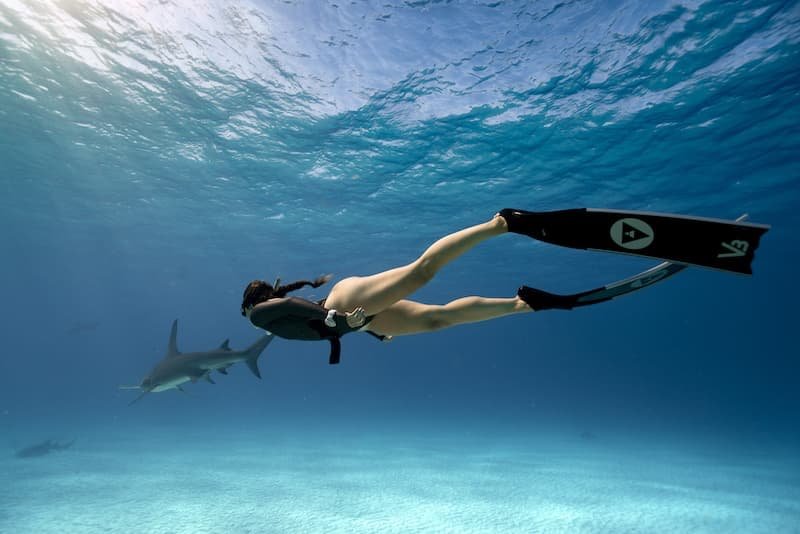
 Katie Wood
Freediver, Writer, Explorer
Katie Wood
Freediver, Writer, Explorer

 Katie Wood
Freediver, Writer, Explorer
Katie Wood
Freediver, Writer, Explorer
Picture this: after weeks of planning you land in Raja Ampat, hungry for manta fly-bys. The local ranger boat greets you at the channel mouth, but instead of a dive briefing you get a closed-sign speech. Mantas are courting in the plankton-rich shallows; no human entries allowed for two weeks. Cameras stay dry, wetsuits stay folded, tempers simmer. The operator offers mangrove snorkels and reef-cleanup shifts as consolation.
On the surface it feels like a ruined holiday. Dig deeper and you see a lesson written in saltwater: sometimes the most responsible act a freediver can perform is to stay topside. The ocean hosts migrations, spawnings, and nursery seasons that run on thousand-year calendars, not airline itineraries. When we ignore that rhythm, wild populations pay. When we honor it with strategic pauses, reefs recover and encounters become richer later.
Coral colonies release their eggs and sperm in moonlit blizzards only a few nights each year. The spectacle is fragile: fin wash, torch beams, and sunscreen droplets all add stress to a process already threatened by warming seas. Marine scientists now advise temporary closures at key spawning sites so larvae can settle undisturbed. Research teams in Florida Keys and Great Barrier Reef routinely block access for 24-48 hour windows to protect the “underwater snowstorm” of coral life.
Fish face the same seasonal vulnerability. Grouper and snapper aggregate in predictable “spawning balls,” turning a quiet reef into a living cyclone. At Western Dry Rocks, Florida, regulators introduced a three-month no-take, no-dive zone each spring to shield these fish while they reproduce. Elsewhere, whale sharks follow plankton blooms to places like Oslob in the Philippines, where provisioning has turned a migratory pit-stop into a year-round circus, stressing the sharks and trampling the reef beneath them.
Even megafauna migrations demand breathing room. North Atlantic right whales shift through shipping lanes on their way to calving grounds; boat-traffic slowdowns and exclusion zones buy mothers and calves a fighting chance. Replace “container ship” with “dive RIB” and the principle is the same: less noise, less collision risk, more surviving offspring.

Dive tourism is booming. A National Geographic–led study projected that fully protecting the world’s existing recreational dive sites could lift global demand by 32 percent and inject 2.7 billion USD into local economies. That sounds counter-intuitive, restrict access and demand rises, but it mirrors what surfers learned with surf-park “crowd caps” and what hikers see on permitted trails. Scarcity, managed well, breeds value.
Thailand offers a living case study. When coral bleaching hammered Phi Phi’s reefs in 2024, ten popular sites were closed for eleven months. Patrols, education, and a blanket “no-entry” line let the polyps regroup. In April 2025 officials reopened the area; divers returned to forests of newly fluorescent hard coral rather than chalk-white skeletons. Operators reported healthier reef fish populations and, tellingly, higher trip prices that guests were happy to pay for a guilt-free dive.
Closures also protect brand reputation. No freediving school wants its Instagram tagged in a video of broken stag-horn. Pro-active bans show stewardship and can spare businesses from reputational blowback when viral footage exposes reef damage.

Ecological wins:
Higher recruitment: Fish spawn unmolested, coral larvae settle without silt clouds from fin kicks.
Reduced disease: Lower diver density cuts the chance of pathogen transfer on gear surfaces.
Noise relief: Cetaceans and elasmobranchs enjoy acoustic respite in critical seasons, improving communication and navigation success.
Social wins:
Better encounters later: Divers who return after a closure often report denser schools and calmer megafauna.
Economic resilience: Healthier ecosystems fetch premium pricing and diversify income through citizen-science programs when sites reopen.
Community buy-in: Local fishers see direct links between seasonal respite and catch size, fostering cross-sector support for conservation.
Psychological wins:
Freediving teaches patience—breath-holds extend because we accept stillness. Seasonal bans extend that lesson to the collective. Restraint becomes a shared ritual, a marker of maturity within the community. Instead of “How deep did you go?” the question shifts to “Did you time your trip to respect the reef?”


Freedivers often cite intimacy with the sea as their prime motive, yet intimacy without consent is intrusion. A reef full of spawning corals cannot speak, but the milky flurry of gametes says, “Give us space.” A pregnant reef shark gliding through a nursery inlet says the same. Our choice is simple: hover anyway and get the shot, or ascend early and let biology run its ancient course.
Seasonal bans are not about shaming travel; they are about synchronizing our rhythms with the ocean’s. They remind us that absence, like a well-timed breath-hold, can be an act of profound presence. The next time a site you planned to dive posts a closure notice, breathe once and picture the larvae drifting through undisturbed dark. Then thank the ranger, book that mangrove snorkel, and come back when the reef is ready to show itself again.
Because at the end of the day, depth records and postcard videos are fleeting. A restored reef, alive with young corals and fearless fish, will outlast every highlight reel we ever post.
If we truly want to call ourselves ocean guardians, we must learn to honor the seasons when the water asks us to stay away.